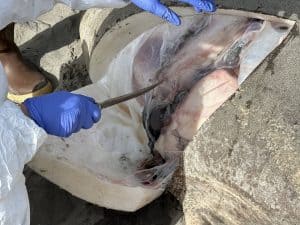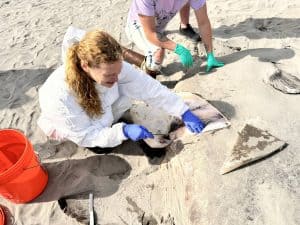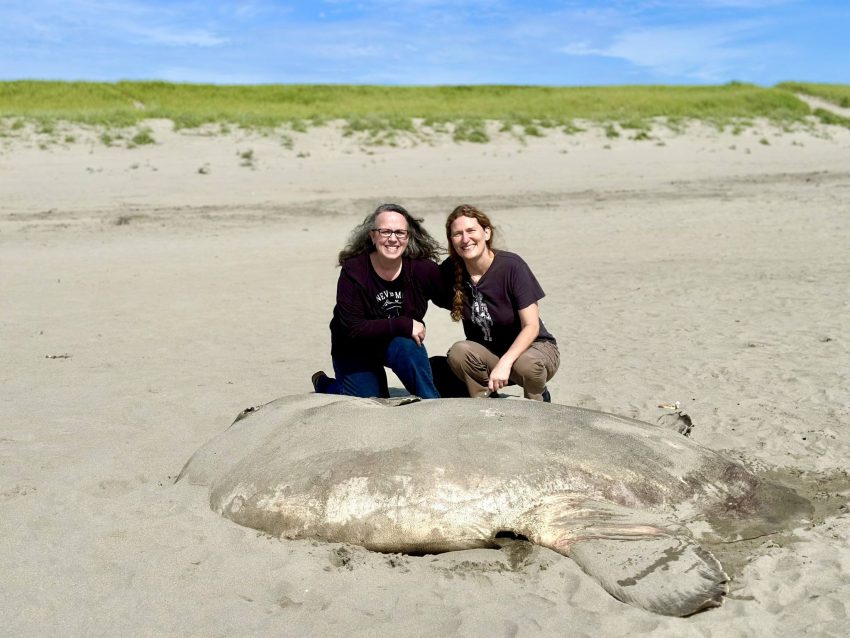From Seaside Aquarium:
As you may know by now, Monday June 3rd, a Sunfish washed up on the beach in Gearhart. (See link below to the original story about this rare Sunfish.) We received a call on Wednesday from Christina Dargan on behalf of her very good friend Marianne Nyegaard, requesting samples in case the massive fish was gone when she arrived on our side of the Pacific. You see, it just so happens that she would be travelling down to visit her best friend in Seattle, WA the very same week from her home in New Zealand, and this was no ordinary Mola Mola, but a Mola Tecta. Marianne is actually THE Marine Biologist who first identified the distinction in 2017!

 They drove down from Seattle on Saturday, and immediately upon their arrival Marianne launched into her natural educator mode. The crowd was spellbound by her obvious passion and knowledge, she answered every question with description, detail and eagerness as she prepared to take the ovary. The ovary is an important organ in the study of this subspecies because there is virtually nothing known about the Mola from incubation to adulthood.
They drove down from Seattle on Saturday, and immediately upon their arrival Marianne launched into her natural educator mode. The crowd was spellbound by her obvious passion and knowledge, she answered every question with description, detail and eagerness as she prepared to take the ovary. The ovary is an important organ in the study of this subspecies because there is virtually nothing known about the Mola from incubation to adulthood.Thank you to Marianne Nyegaard for being so willing and eager to share your passion and knowledge with everyone and allowing us to be even a little part of this very cool expedition. We feel so lucky to have had the opportunity to witness, and be a part of, the largest Mola Tecta to be sampled so far.
The fish is currently still on the beach and today we headed back up to it to get some more samples but this time they are for Woods Hole Oceanographic Institution Marine Chemistry Department. They are looking at mercury stable isotopes to understand mercury uptake and bioaccumulation in fish, and since sunfish live at the very surface of the ocean, they serve as an excellent proxy for understanding mercury exposure from anthropogenic deposition to marine waters.


